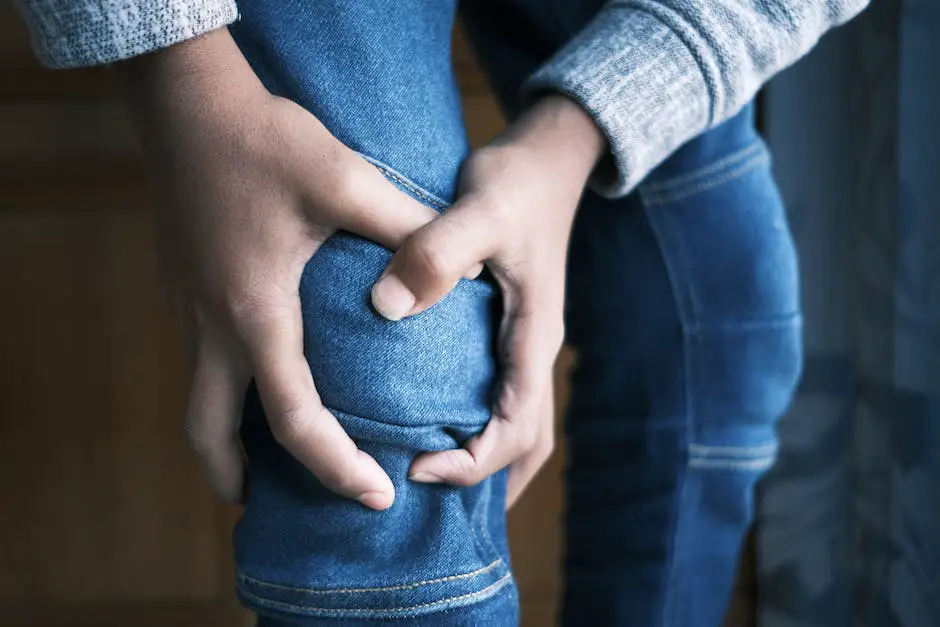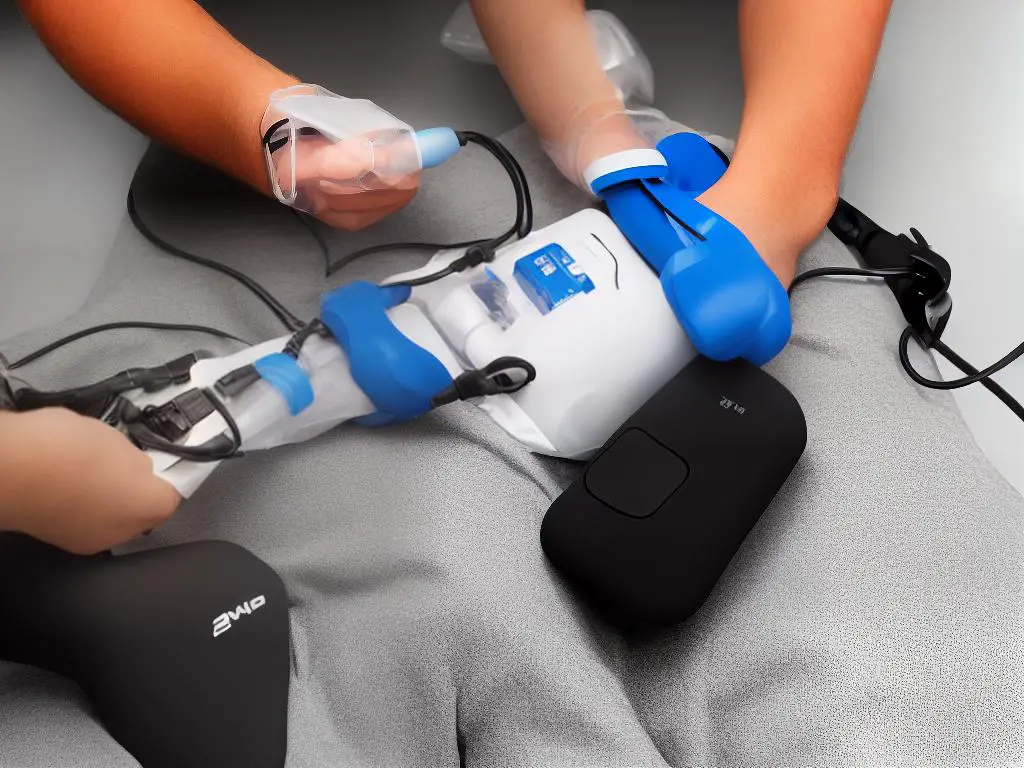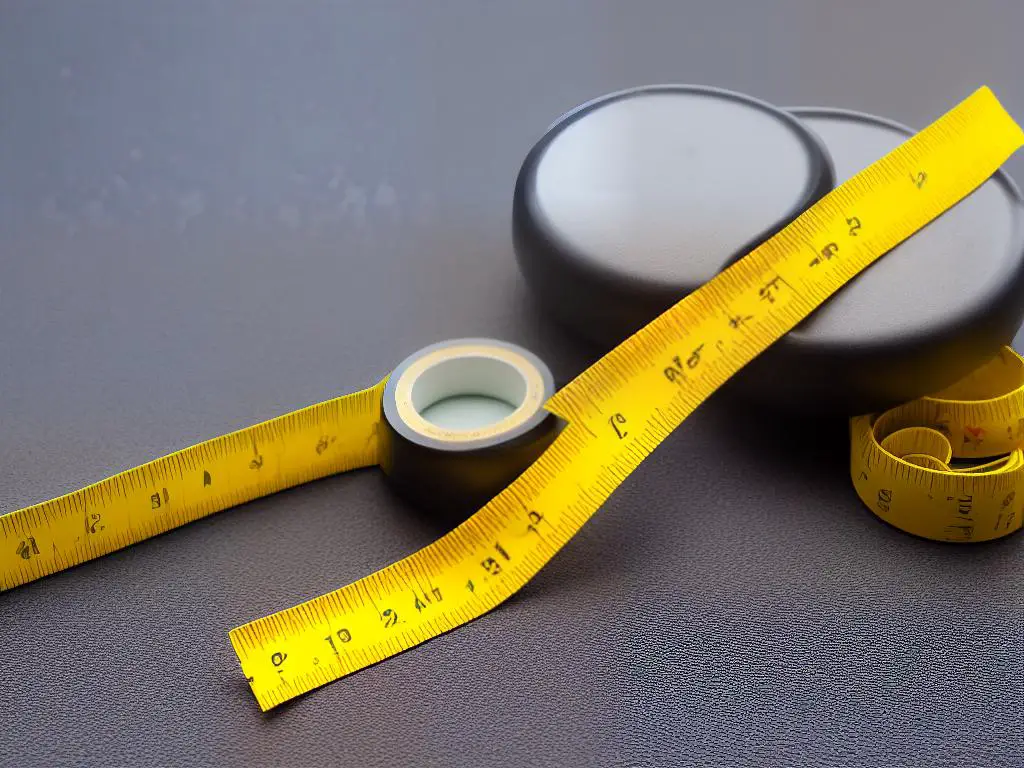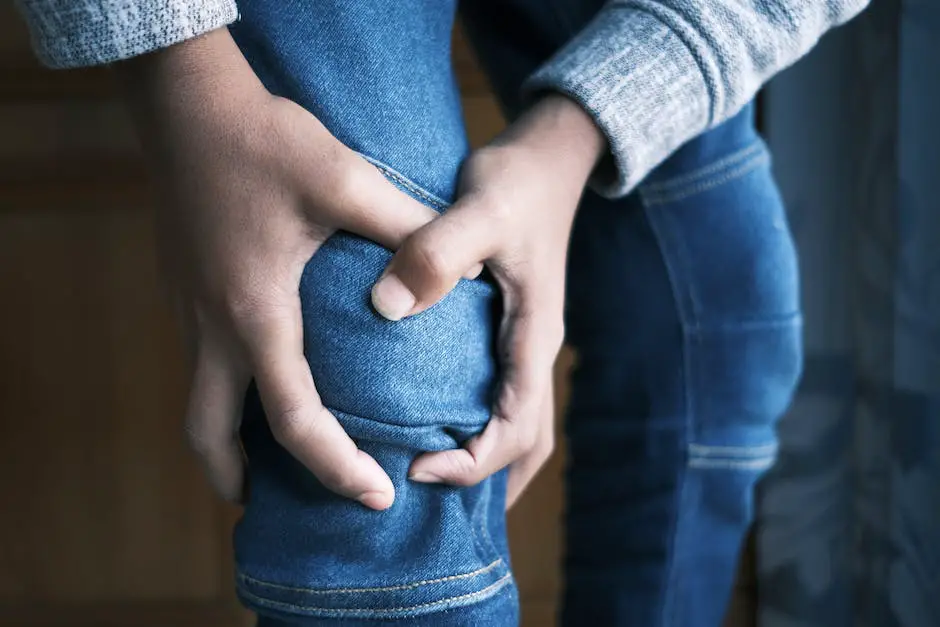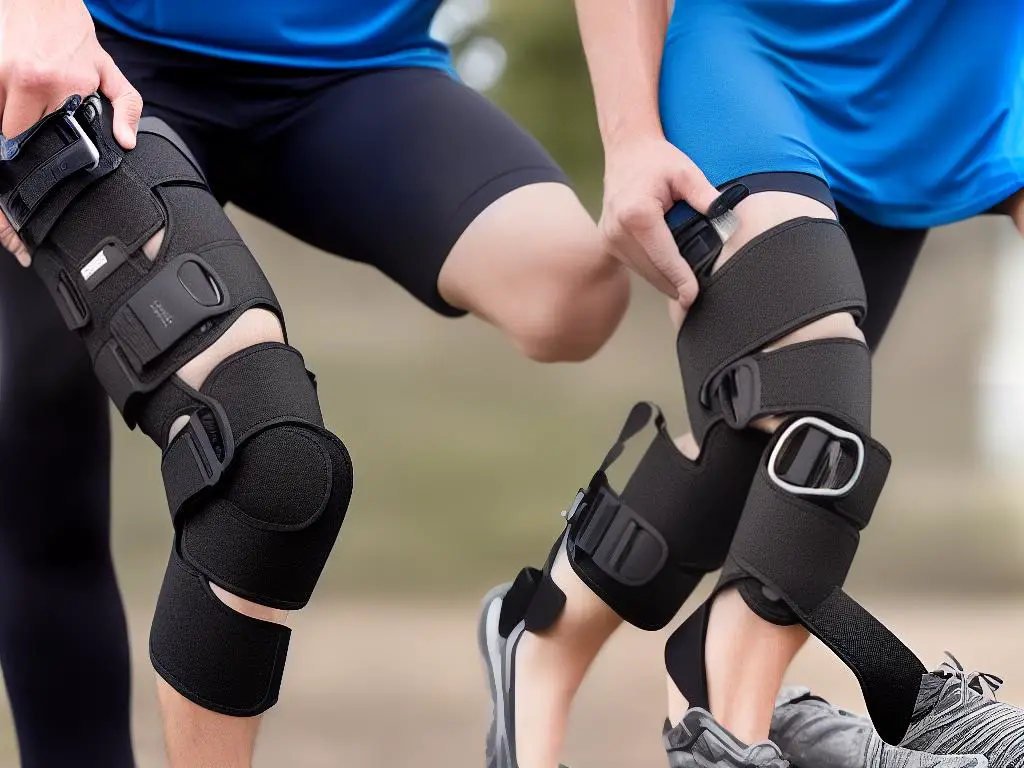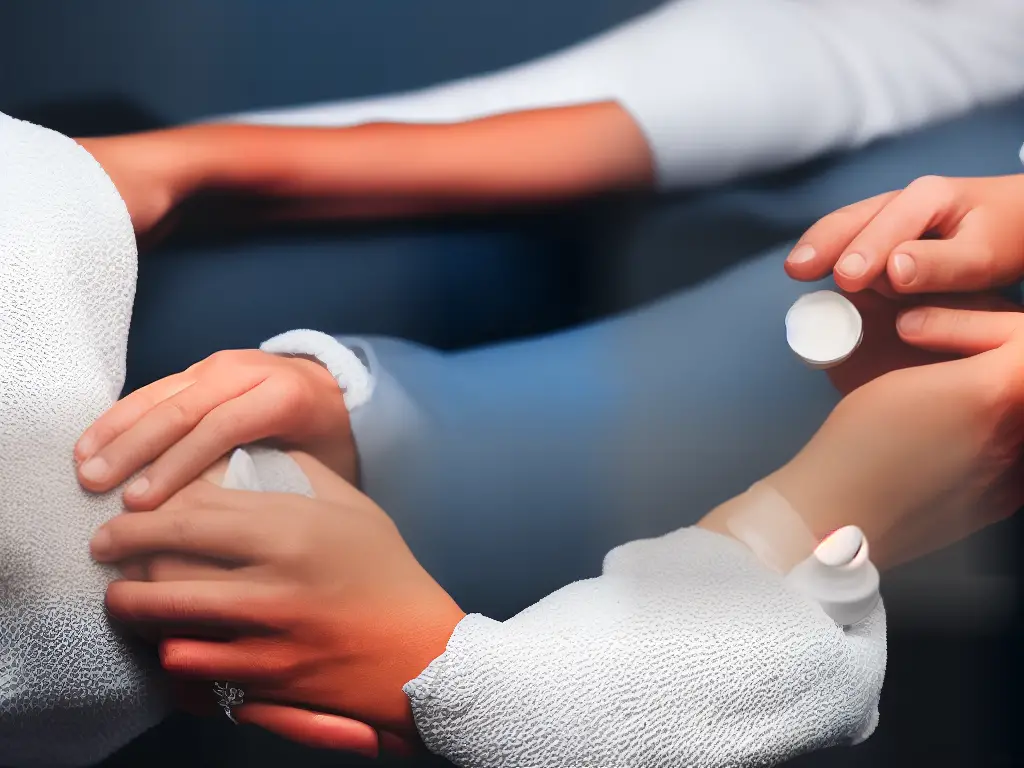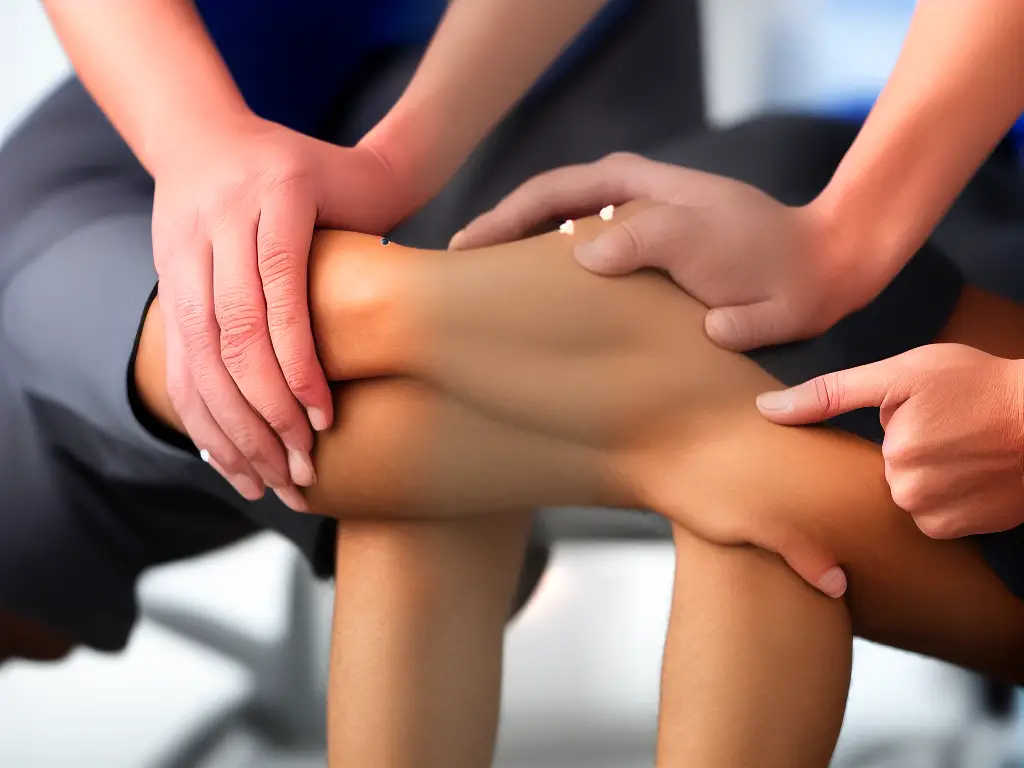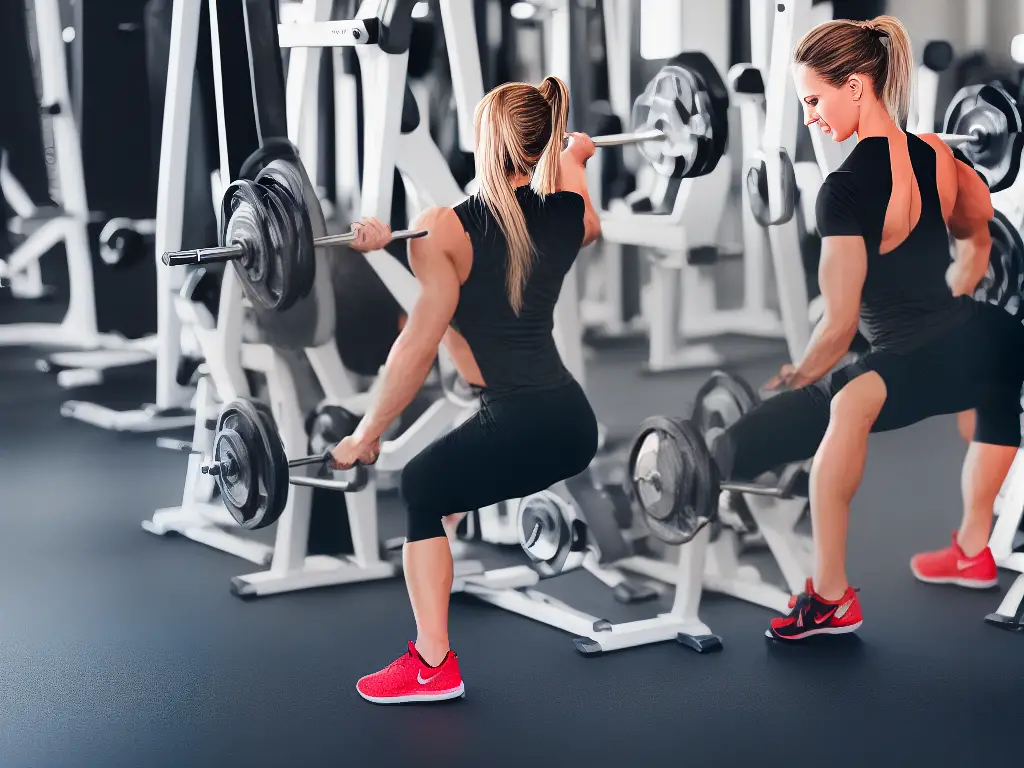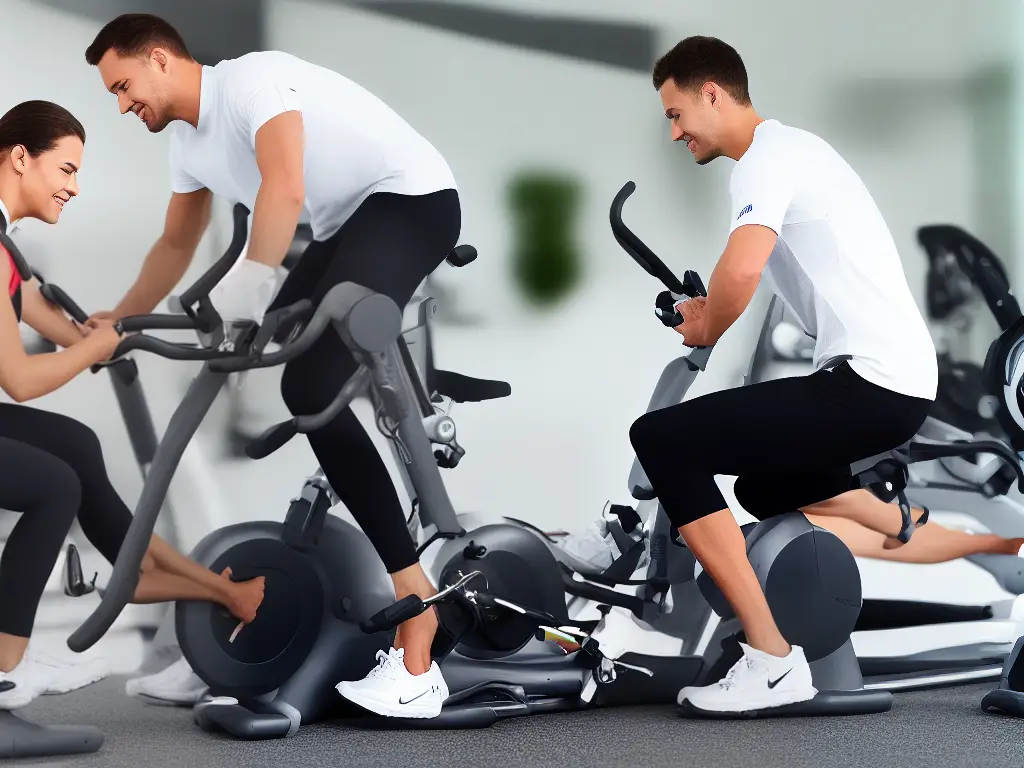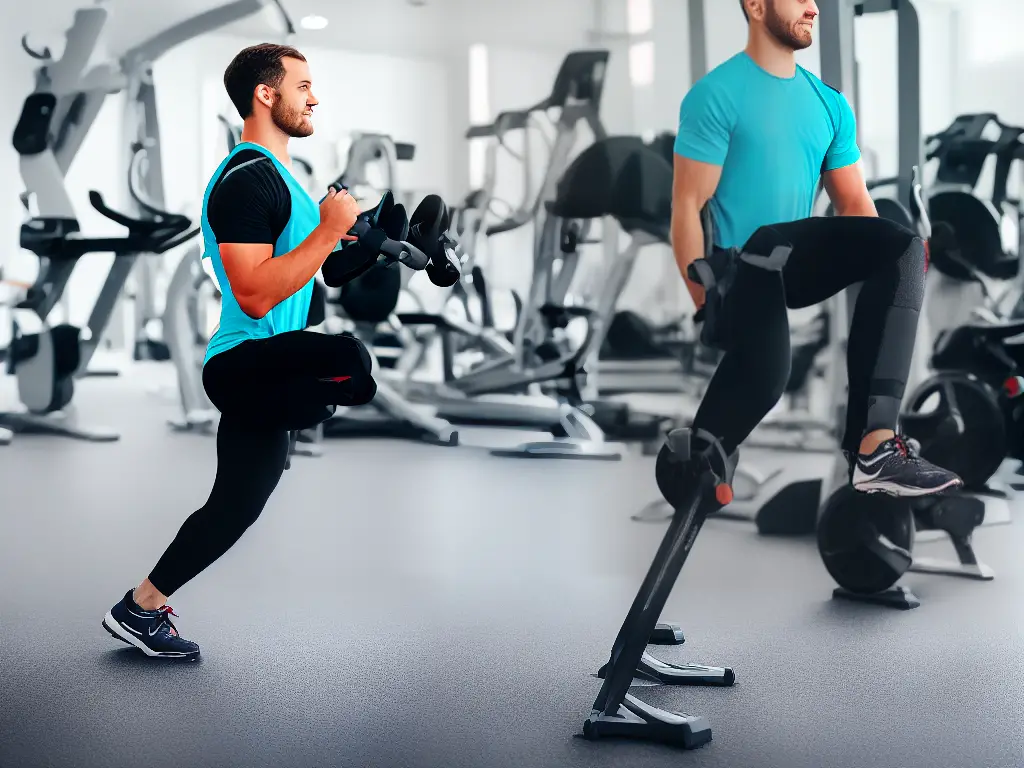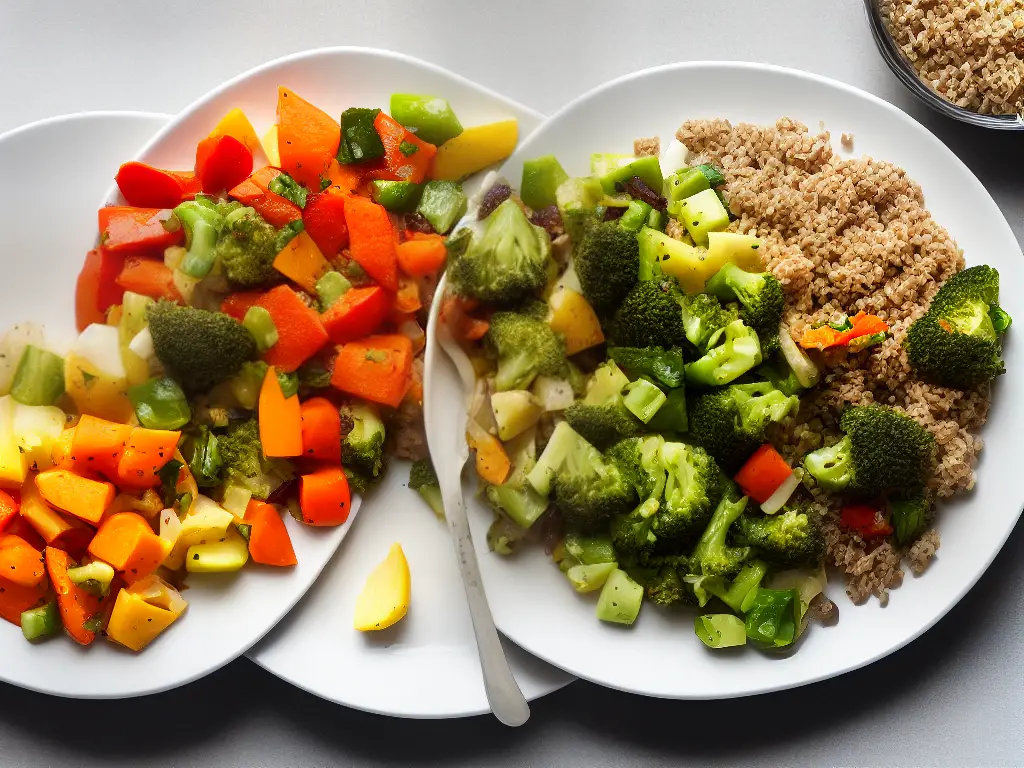Knee pain is a common issue that affects individuals of all ages. By understanding the various causes of knee pain and implementing simple lifestyle modifications, it’s possible to alleviate discomfort and improve overall quality of life. This article covers an array of topics designed to help you better understand and address knee pain, from proper footwear and strengthening exercises to weight management and alternative therapies.
Understanding Knee Pain
Understanding Knee Pain: Common Causes and How to Address Them
Knee pain is a prevalent issue for many people, affecting daily activities and overall quality of life. In order to address knee pain effectively, it’s crucial to understand its common causes and potential lifestyle modifications that can alleviate discomfort and prevent further harm. This guide will discuss the common causes of knee pain, such as arthritis, injuries, and mechanical issues, and provide practical tips for managing the pain.
Common Causes of Knee Pain
Arthritis
1. Osteoarthritis: The most common form of arthritis, characterized by the gradual wear and tear of the cartilage in the knee joint.
2. Rheumatoid arthritis: An autoimmune disease that causes inflammation in the lining of the joints, leading to joint pain and damage.
3. Gout: A form of arthritis that occurs when uric acid builds up in the blood and forms crystals in the joints, causing inflammation and pain.
Injuries
1. Ligament injuries: Tears in the ligaments that connect the bones in the knee, such as the anterior cruciate ligament (ACL) or medial collateral ligament (MCL).
2. Meniscal tears: Damage to the meniscus, a piece of cartilage that acts as a cushion between the thigh bone and shinbone.
3. Tendonitis: Inflammation or irritation of a tendon, often caused by repetitive movement or overuse.
Mechanical Issues
1. Patellar tracking disorder: A condition in which the kneecap does not move correctly during bending and straightening of the knee, leading to damage and pain.
2. Iliotibial band syndrome: Irritation and inflammation of the iliotibial band, a ligament running along the outside of the thigh, causing pain on the outer side of the knee.
Lifestyle Modifications for Managing Knee Pain
Weight Management
1. Maintaining a healthy weight can reduce pressure on the knee joints and decrease the risk of developing or worsening knee pain.
2. Incorporate a balanced diet and regular exercise into your daily routine.
Exercise and Physical Activity
1. Engage in low-impact exercises that strengthen the muscles around the knee, such as swimming, cycling, and strength-training exercises.
2. Avoid high-impact sports and activities that can exacerbate knee pain, like basketball or running.
3. Consult with a physical therapist to develop a tailored exercise plan.
Proper Footwear
1. Wear supportive and comfortable shoes that evenly distribute weight and reduce stress on the knees.
2. Avoid high heels and shoes that lack proper arch support or cushioning.
Injury Prevention
1. Warm-up before physical activity and stretch the muscles around the knee to improve flexibility and reduce the risk of injury.
2. Use proper form and techniques when engaging in sports and exercise activities.
3. Wear protective gear, such as knee pads, when participating in activities that increase the risk of knee injuries.
Rest and Pain Management
1. Take breaks and give your knees time to rest and recover, especially if you experience an increase in pain.
2. Apply ice packs to the affected area for 15 to 20 minutes, several times a day, to alleviate pain and reduce inflammation.
3. Consider over-the-counter pain-relievers like ibuprofen or naproxen, but consult with a healthcare professional first.
Conclusion
Understanding the common causes of knee pain and implementing lifestyle modifications can help alleviate discomfort and improve overall quality of life. By maintaining a healthy weight, engaging in low-impact exercise, wearing proper footwear, preventing injuries, and managing pain, you can take proactive steps toward managing and preventing knee pain. Always consult a healthcare professional for personalized advice, diagnosis, and treatment of knee pain.

Proper Footwear
Knee Pain Lifestyle Modifications: Proper Footwear and Support
Knee pain can hinder daily activities and affect the quality of life. One of the essential ways to manage knee pain is by adopting proper footwear habits which provide adequate support and stability. This guide will cover the importance of appropriate footwear, orthotic insoles, and shoe inserts in alleviating knee pain.
Step 1: Choose the right footwear
-
Look for shoes with excellent support and cushioning that will minimize stress on your knees.
-
Ensure the shoe has arch support to prevent flat feet and is flexible enough to let the foot move naturally.
-
Avoid high heels or shoes that tilt the foot forward, as they can put more stress on the knees.
-
Opt for shoes with a spacious toe box, allowing freedom of movement for the toes.
-
Replace worn-out shoes every 300-500 miles (for runners) or every 6-12 months (for regular use).
Step 2: Consider orthotic insoles
-
Consult a podiatrist, orthopedic specialist, or physical therapist to determine if you require orthotic insoles.
-
Orthotic insoles can correct foot alignment, provide arch support, reduce pronation, and provide shock absorption.
-
Remember that orthotic insoles are specific to the individual, so it’s essential to get a custom-fit for the best results.
Step 3: Use shoe inserts for added support
-
Shoe inserts, such as heel wedges or arch supports, are more generic solutions to provide extra support and cushioning.
-
Heel wedges can help relieve pain by redistributing pressure on the knee joint.
-
Arch supports prevent overpronation and help maintain proper foot alignment.
-
Before buying inserts, consult with a healthcare professional to make sure they are appropriate for your specific needs.
Step 4: Break in new shoes gradually
-
Allow time for your feet to adjust to new shoes or insoles by wearing them for short periods initially.
-
Gradually increase the time spent wearing them until you feel comfortable.
-
Pay attention to any pain or discomfort while wearing the shoes and consult a healthcare professional if the negatives persist.
Step 5: Maintain a healthy weight
-
Weight reduction can help reduce knee pain and lessen the strain on the joints.
-
Losing weight will not only help your knees but also improve overall health.
Incorporating appropriate footwear, orthotic insoles, and shoe inserts into your daily life can significantly impact the reduction of knee pain. Ensuring proper support and cushioning for your feet will contribute to better knee health and mobility. Always consult a healthcare professional for personal recommendations and if the pain persists.

Strengthening Exercises
Knee Pain Lifestyle Modifications: Strengthening Exercises
Strengthening the muscles around your knee, such as the quadriceps and hamstrings, can help alleviate knee pain and improve stability. Here are some exercises that you can incorporate into your daily routine to strengthen these muscles:
-
Quad Sets:
- – Sit or lie down with your legs straight in front of you.
- – Tighten the muscles on the top of your thigh (quadriceps) by pressing your knee down toward the ground.
- – Hold the contraction for 3-5 seconds, then relax.
- – Complete 3 sets of 10 repetitions for each leg.
-
Straight Leg Raises:
- – Lie on your back with one leg bent and the other leg straight.
- – Tighten the quadriceps muscles of your straight leg and lift it off the ground, keeping your knee straight.
- – Raise your leg to a height of about 6-8 inches, then lower it slowly back to the ground.
- – Complete 3 sets of 10 repetitions for each leg.
-
Wall Sits:
- – Stand with your back against a wall, feet shoulder-width apart.
- – Slowly slide your back down the wall, keeping your feet flat on the ground, until you reach a position where your thighs are parallel to the floor and your knees are bent at a 90-degree angle.
- – Hold this position for 10-30 seconds, then slowly slide back up to the starting position.
- – Complete 3 sets of 10 repetitions.
-
Hamstring Curls:
- – Stand on one leg, using a chair for balance if necessary.
- – Bend the knee of your other leg, bringing your heel toward your buttocks.
- – Keep your thighs aligned and avoid arching your lower back.
- – Hold the position for a couple of seconds, then lower your foot back to the ground.
- – Complete 3 sets of 10 repetitions for each leg.
-
Step-ups:
- – Using a low step or sturdy box, place one foot on the step.
- – Press through the heel of the elevated foot, lifting your body up onto the step.
- – Slowly lower yourself back to the ground, controlling your descent.
- – Complete 3 sets of 10 repetitions for each leg.
-
Calf Raises:
- – Stand on the edge of a step with your heels hanging off the edge.
- – Slowly raise your heels up, coming onto the balls of your feet.
- – Lower your heels back down, feeling a stretch in your calves.
- – Complete 3 sets of 10 repetitions.
Always remember to maintain proper form throughout the exercises to prevent injury. Additionally, warm up before performing these exercises and stretch afterward to maintain flexibility. Be sure to consult with a healthcare professional or certified fitness professional before beginning any new exercise program, especially if you have existing knee pain.

Weight Management
Weight Management for Alleviating Stress on Knee Joints and Reducing Knee Pain
Objective: Understand how weight loss can alleviate stress on your knee joints, ultimately reducing knee pain.
Introduction
Knee pain can be caused by various factors, such as injury, arthritis, or overuse. One significant factor that contributes to knee pain is excessive body weight. By losing weight and managing a healthy lifestyle, you can alleviate stress on your knee joints and reduce knee pain.
Instructions on Weight Management:
- Consult a healthcare professional: Before starting any weight loss or exercise program, consult your doctor, physical therapist, or a nutritionist. They can provide personalized advice based on your health history and current condition.
- Assess your current weight: Determine your current weight and calculate your body mass index (BMI). This information will help you understand whether you are overweight or obese, which can contribute to knee pain. The Centers for Disease Control and Prevention (CDC) provides a BMI calculator: https://www.cdc.gov/healthyweight/assessing/bmi/index.html
- Set realistic weight loss goals: Establish achievable and realistic weight loss goals, focusing on losing 1-2 pounds per week. Consider a combination of dietary changes and regular physical activity to achieve and maintain your desired weight.
- Modify your diet: Adopt a healthy and balanced diet containing a variety of nutrient-rich foods. Focus on whole foods such as fruits, vegetables, whole grains, lean proteins, and healthy fats. To create a calorie deficit, reduce portion sizes and cut out empty-calorie foods like soda, sugary snacks, and fried foods. You may also consult a dietitian to help you develop a personalized meal plan.
- Incorporate regular physical activity: Engage in regular physical activity that is low-impact and easy on your knees. Examples include swimming, water aerobics, cycling, and walking. Aim for at least 150 minutes of moderate-intensity aerobic activity per week, as recommended by the American Heart Association.
- Strengthen your muscles: Incorporate strength training exercises that focus on your leg and core muscles. Having stronger muscles can help support your knee joints, reducing pressure and pain. Consult a physical therapist to create a tailored strength training program.
- Manage your progress: Track your progress through journaling, using a smartphone app, or a wearable fitness tracker. Monitoring your weight loss, exercise, and dietary habits will help you stay motivated and make adjustments as needed.
- Seek support: Share your goals with friends, family members, or join a support group to help you stay accountable and get encouragement throughout your weight loss journey.
Conclusion
Weight management plays a crucial role in reducing knee pain and improving overall joint health. By following these lifestyle modifications, you can alleviate stress on your knee joints and reduce knee pain. Remember to consult a healthcare professional before starting any weight loss or exercise program and seek support from your loved ones to stay motivated and accountable.

Flexibility and Stretching
Knee Pain Lifestyle Modifications: Flexibility and Stretching
Knee pain is a common ailment that affects many people. One of the best ways to alleviate knee pain and improve your overall knee health is by incorporating flexibility and stretching exercises into your daily routine. These exercises can help improve your knee’s range of motion and reduce stiffness, allowing you to enjoy a more active and pain-free lifestyle. In this guide, we will discuss various stretching techniques that can help improve the flexibility of the muscles surrounding your knees.
Warm-Up
Before beginning any stretching exercises, it is important to warm up your muscles to increase circulation and prevent injury. Start with 5-10 minutes of light cardio exercises, such as walking or stationary cycling, to get your blood flowing and prepare your muscles for stretching.
Hamstring Stretch
Tight hamstrings can contribute to knee pain as they can limit the range of motion in your knees.
- Sit on the floor with both legs extended in front of you
- Bend one knee and place the foot against the inner thigh of your straight leg
- Reach forward towards the toes of your straight leg, keeping your back straight
- Hold the stretch for 15-30 seconds, then switch legs
Quadriceps Stretch
The quadriceps muscles are located on the front of your thigh and play a crucial role in supporting your knee joint.
- Stand with your feet hip-width apart
- Bend one knee and hold your foot behind you, keeping your knees close together
- Gently pull your foot towards your buttocks until you feel a stretch in the front of your thigh
- Hold the stretch for 15-30 seconds, then switch legs
Calf Stretch
Tight calf muscles can also lead to knee pain by restricting your knee’s range of motion.
- Stand facing a wall with your hands placed on the wall for support
- Place one foot behind the other with your back heel on the ground
- Gently lean forward, keeping your back leg straight and back heel on the floor
- Hold the stretch for 15-30 seconds, then switch legs
Iliotibial (IT) Band Stretch
The IT Band is a ligament that runs along the outside of your thigh and can contribute to knee pain when tight.
- Stand with your feet hip-width apart
- Cross the leg to be stretched behind your other leg
- Place your hand on the hip of the leg to be stretched
- Gently push your hip out to the side, feeling a stretch along the outside of your thigh
- Hold the stretch for 15-30 seconds, then switch legs
Hip Flexor Stretch
Tight hip flexors can also contribute to knee pain by limiting the range of motion in your hips.
- Kneel on one knee with the other foot flat on the floor in front of you
- Keep your back straight and engage your abdominal muscles
- Gently push your hips forward, feeling a stretch in the front of the hip of the kneeling leg
- Hold the stretch for 15-30 seconds, then switch legs
Regular Stretching Routine
For best results, incorporate these stretching exercises into your daily routine. Aim to stretch each muscle group at least once per day, holding each stretch for 15-30 seconds.
Conclusion
By incorporating flexibility and stretching exercises into your daily routine, you can improve your knee’s range of motion and reduce stiffness, ultimately mitigating knee pain. Regular stretching will also help to strengthen the muscles surrounding your knees, providing better support for the joint and preventing future injuries. Always consult with a healthcare professional before starting a new exercise program, especially if you have chronic knee pain or a history of knee injuries.

Physical Therapy
Physical Therapy for Knee Pain – Improving Function and Living Pain-Free
Knee pain is a common issue experienced by millions of people, often due to injury, arthritis, or everyday wear and tear. Making targeted lifestyle modifications and seeking physical therapy can significantly improve knee joint function and reduce pain. In this article, we will explore the benefits of physical therapy, how it addresses knee pain, and suggested lifestyle modifications to support your journey to a pain-free life.
The Benefits of Physical Therapy for Knee Pain
- Pain Reduction: Physical therapists use various evidence-based techniques, such as therapeutic exercises, manual therapy, and joint mobilizations, to relieve knee pain and improve joint health.
- Improved Mobility and Flexibility: Physical therapy treatment plans are customized for each patient. Your therapist will work with you to develop a personalized exercise program that gradually improves knee range of motion, strength, and flexibility, without causing further injury or pain.
- Faster Recovery: By participating in a structured and guided physical therapy program, patients can recover more quickly from knee pain. This could mean getting back to daily activities and sports more comfortably and safely.
- Injury Prevention: Physical therapists identify and address muscle imbalances, biomechanical issues, and movement patterns that may contribute to knee pain. Correcting these issues can prevent future injuries and help maintain long-term knee health.
- Non-Invasive Treatment Options: Physical therapy offers an alternative to surgery and long-term use of pain medications. It is a safe and effective way to address knee pain, often helping patients avoid more invasive treatments.
Steps to Addressing Knee Pain with Physical Therapy
- Consultation and Evaluation: Your physical therapist will start by conducting a comprehensive evaluation of your knee pain, range of motion, strength, and functional abilities. They will also ask about your medical history, activity level, and goals for treatment.
- Personalized Treatment Plan: Based on the evaluation, your physical therapist will create a tailored treatment plan with specific exercises, manual therapy techniques, and pain-relief modalities. This plan will focus on addressing your pain and mobility concerns while considering your lifestyle and daily activities.
- Active Participation: Physical therapy requires active participation from the patient. Attend and engage in your therapy sessions to get the most benefits. Consistently perform the prescribed therapeutic exercises and follow your therapist’s recommendations for daily activities and lifestyle modifications.
- Progress Monitoring and Adjustments: Your physical therapist will monitor your progress throughout the treatment plan, adjusting exercises and implementing new strategies as needed. It’s essential to communicate with your therapist about your pain levels, concerns, and goals to ensure an effective, individualized treatment plan.
Lifestyle Modifications to Complement Physical Therapy
- Maintain a Healthy Weight: Excess body weight places additional stress on your knees. By adopting a balanced diet and regular exercise, you can achieve and maintain a healthy weight, reducing the stress on your joints and helping to prevent future knee pain.
- Choose Low-Impact Activities: Swap high-impact exercises, such as running and jumping, for low-impact activities like swimming, cycling, or walking. This will help minimize stress on your knees during daily activities and exercise.
- Supportive Footwear: Wearing appropriate and supportive shoes can help improve your overall posture and alignment, reducing the likelihood of knee pain.
- Warm-Up and Stretch: Properly warming up before exercise and consistently stretching afterward can help maintain flexibility, prevent injury, and reduce knee pain.
Conclusion
Physical therapy is an effective and essential treatment option for individuals experiencing knee pain. It offers numerous benefits – from pain relief and improved mobility to injury prevention and non-invasive treatment options. By actively participating in your treatment plan and incorporating lifestyle modifications, you can work towards better knee health and improved overall function.

Posture and Body Mechanics
Lifestyle modifications for knee pain: Posture and body mechanics
Knee pain is a common complaint that can affect people of all ages. Poor posture and improper body mechanics are often contributing factors to knee pain. By focusing on improving these areas, you can reduce knee strain and prevent further injury. This guide will provide instructions on how to maintain good posture and employ proper body mechanics to reduce knee strain.
Pay attention to your posture
Good posture lessens the strain on your knee joints. Focus on keeping your head, shoulders, and hips aligned when standing or sitting. When sitting, avoid crossing your legs or sitting with your legs bent under you. This can cause additional strain on your knees. Ensure that both feet are flat on the floor and your knees are aligned with your hips.
Stand tall
When standing, keep your feet hip-width apart and distribute your weight evenly on both feet. Avoid locking your knees or shifting your weight to one side, which can strain the knee joint. Engage your core muscles to help maintain proper posture and support the muscles around your knees.
Maintain a neutral spine
A neutral spine allows proper weight distribution and minimizes strain on your knees. Aim to avoid excessive arching or rounding of your lower back when standing and sitting. Activate your abdominal muscles and keep your chin tucked to help maintain a neutral spine.
Practice proper lifting techniques
When lifting heavy objects, use your leg muscles instead of putting excessive strain on your knees. Squat down, keeping your chest up and back straight. Hold the object close to your body and stand up using your leg and glute muscles, making sure not to twist your body.
Strengthen your leg muscles
Strong leg muscles, particularly the quadriceps and hamstrings, can help support your knees and reduce strain. Incorporate regular strength training exercises into your routine, ensuring that you maintain proper form and technique throughout each exercise to avoid injury.
Wear supportive shoes
Shoes with adequate arch support and cushioning can help reduce the impact on your knees when walking or standing. Opt for shoes designed for your specific activity, and replace them when they show signs of wear.
Exercise with low-impact activities
Engage in low-impact exercises (e.g., swimming, walking, or cycling) to help reduce stress on your knees while maintaining physical fitness. Avoid high-impact activities (e.g., running and jumping) if they contribute to knee pain.
Stretch regularly
Stretching exercises can help maintain flexibility, improve joint range of motion, and reduce the risk of injury. Perform stretches for your hamstrings, quadriceps, calves, and iliotibial (IT) band on a regular basis.
Closing
By following these posture and body mechanic guidelines, you can help reduce the strain on your knees and minimize the risk of knee pain or injury. Remember to consult with a medical professional before starting any new exercise program or if you have concerns about your knee pain.

Ice and Heat Therapy
Ice and Heat Therapy for Knee Pain Relief
Experiencing knee pain can hinder your daily activities and overall quality of life. Fortunately, ice and heat therapy offers an effective way to reduce inflammation and alleviate knee pain. By understanding how to apply these therapies properly, you can take control of your knee pain and improve your lifestyle.
Determine When to Use Ice or Heat
Before applying either ice or heat therapy, take a moment to determine which method is best for your situation. Typically, ice therapy is beneficial for acute injuries (i.e., injuries that occurred within the last 48 hours) or whenever you experience a flare-up of knee pain. In contrast, heat therapy works best for chronic pain or stiffness and can be used before activities that may cause discomfort.
Choose the Ice or Heat Application Tool
Ice Therapy Options:
- Ice pack: A reusable ice pack that can be stored in the freezer is convenient and effective.
- Crushed ice: Wrap crushed ice in a towel for a flexible, moldable option.
- Frozen vegetables: A bag of frozen vegetables serves as an easy, temporary ice pack.
Heat Therapy Options:
- Heating pad: An electric heating pad is adjustable and convenient.
- Microwaveable heat pack: These packs can be heated in the microwave and are reusable.
- Warm towel: A towel soaked in hot water and wrung out is a simple heat application tool.
Prepare for Ice or Heat Application
Before applying either method, ensure that the skin around your knee is clean and dry. For both ice and heat therapy, place a thin towel or cloth barrier between the skin and the application tool to prevent burns or frostbite.
Apply Ice Therapy
To apply ice therapy, follow these steps:
- Place the ice pack, crushed ice, or frozen vegetables on your knee, ensuring it covers the entire painful area.
- Keep the ice in place for 15-20 minutes. If using a large ice pack, avoid exceeding 20 minutes.
- After the time has elapsed, remove the ice and let your skin return to its normal temperature for at least 45-60 minutes before reapplying.
Note: Repeat the ice therapy several times a day, ensuring that an appropriate break is taken between applications.
Apply Heat Therapy
Follow these steps to apply heat therapy to your knee:
- Ensure your heating pad, microwaveable heat pack, or warm towel is at a comfortable and safe temperature.
- Apply heat to your knee, making sure it covers the painful or stiff area.
- Leave the heat in place for 15-20 minutes, checking occasionally to ensure the temperature remains comfortable and safe.
- Remove the heat source after the allotted time.
Note: Heat therapy can be applied multiple times a day as needed but should not be used directly before or after the ice therapy.
Conclusion
Ice and heat therapy can be a convenient and effective way to alleviate knee pain and reduce inflammation. By following these steps and determining the appropriate therapy for your situation, you can take control of your knee pain and improve your overall quality of life. Remember to consult with a healthcare professional if your knee pain is severe or persistent despite these lifestyle modifications.

Anti-Inflammatory Diet
Anti-Inflammatory Diet for Reducing Knee Pain
Making positive changes to your diet can help in reducing inflammation and alleviating knee pain. This guide will provide you with practical instructions on adopting an anti-inflammatory diet that may help ease your knee pain.
Step 1: Avoid processed foods
- Remove processed and pre-packaged foods from your diet, as they often contain unhealthy fats and additives that can contribute to inflammation.
- Stay clear from processed meats, sugary snacks, and artificial sweeteners as well as refined carbohydrates like white bread and pasta.
Step 2: Incorporate more fruits and vegetables
- Aim to eat at least 5 servings of fruits and vegetables daily. Choose a variety of colors with each meal to ensure you are consuming a wide range of anti-inflammatory nutrients, vitamins, and minerals.
- Prioritize leafy greens, cruciferous vegetables, and antioxidant-rich fruits like berries, cherries, and citrus fruits.
Step 3: Choose healthy fats
- Include Omega-3 fatty acids in your diet, as they have strong anti-inflammatory properties. Sources of Omega-3s include fatty fish like salmon, mackerel, and sardines, as well as walnuts and flaxseeds.
- Replace unhealthy cooking oils with healthier alternatives, like olive oil or avocado oil.
Step 4: Plan your protein sources wisely
- Opt for lean proteins like chicken, turkey, and fish over red meat. Reducing your intake of red meat can help lower inflammation.
- Don’t forget about plant-based protein sources, such as beans, chickpeas, lentils, and tofu. These foods provide excellent nutrients and fiber that have anti-inflammatory benefits.
Step 5: Use spices and herbs
- Curcumin, the active compound in turmeric, has been shown to have potent anti-inflammatory properties. Incorporate turmeric into your recipes or consider taking a curcumin supplement.
- Other spices with anti-inflammatory effects are cinnamon, ginger, and garlic. Experiment with these spices in your cooking to add flavor and promote health benefits.
Step 6: Stay hydrated
- Adequate water intake is crucial for maintaining overall health and reducing inflammation in the body. Aim for at least 8 glasses of water per day; more may be needed during physical activity or in warmer climates.
- Limit the consumption of sugary beverages and alcohol, as they can contribute to inflammation.
Step 7: Monitor portion sizes
- Overeating can lead to weight gain, which can place extra stress on your knees. Monitor your portion sizes, and aim to consume smaller, balanced meals throughout the day.
- Consider practicing mindful eating techniques to help you slow down and listen to your body’s hunger cues.
Adopting an anti-inflammatory diet and making positive lifestyle changes can be highly beneficial in reducing knee pain and promoting overall health. Remember to consult a healthcare professional before making significant changes to your diet, especially if you have an underlying health condition.

Alternative Therapies
Alternative Therapies for Knee Pain Relief
Living with knee pain can be both physically and emotionally draining. It’s essential to find methods that can provide relief and improve your overall quality of life. While there are various conventional treatments available, alternative therapies can also be beneficial in relieving knee pain. This guide will explore alternative therapies such as acupuncture and hydrotherapy, which can help alleviate your discomfort and allow you to move more freely.
Step 1: Research and Understand Your Options
Before trying any alternative therapy, it is crucial to research and understand the treatment fully. Speak to your doctor about your options and consult with trained professionals in the respective fields.
Step 2: Acupuncture for Knee Pain Relief
Acupuncture, a traditional Chinese medicine technique, may help alleviate knee pain by stimulating specific points in the body to promote natural healing and pain relief. Consider the following points while opting for acupuncture:
- Find a certified acupuncturist: Seek a licensed professional with experience in treating knee pain. You can ask for recommendations from friends, family, or search online for reputable clinics in your area.
- Dress comfortably: Wear loose, comfortable clothing during your acupuncture session to ensure easy access to the knee and surrounding areas.
- Communicate with your practitioner: Discuss your symptoms, medical history, and any concerns before beginning the treatment. This information will help the acupuncturist personalize your session for maximum benefit.
- Be patient: Acupuncture may require multiple sessions for optimal results. Be patient and consistent with your treatment plan.
Step 3: Hydrotherapy for Knee Pain Relief
Hydrotherapy, or water therapy, involves performing exercises in a pool to help alleviate knee pain. The buoyancy of the water reduces joint stress, making it easier to perform movements that might be difficult on land. Here are some steps to follow for hydrotherapy:
- Find a suitable facility: Locate a therapy pool or fitness center with a warm water pool designed for exercise. Some facilities may offer hydrotherapy classes or personal trainers who can guide you through appropriate exercises.
- Consult your doctor: Before beginning hydrotherapy, speak with your doctor to ensure the treatment is suitable for your specific knee condition.
- Wear appropriate swimwear: Invest in comfortable, supportive swimwear and water shoes for increased stability during exercises.
- Start with simple exercises: Begin with gentle, low-impact exercises such as marching in place or gentle water walking. As your strength and mobility improve, you can move on to more challenging exercises like leg lifts and water jogging.
- Maintain a routine: Aim for two to three hydrotherapy sessions per week to maximize benefits. Consistency is crucial for long-term knee pain relief.
Step 4: Combine Therapies for Optimal Results
While acupuncture and hydrotherapy can be effective on their own, a combination of therapies can provide more comprehensive pain relief. Integrating multiple treatment methods, such as acupuncture, hydrotherapy, and conventional treatments like physical therapy, can optimize your overall recovery plan.
Conclusion:
Alternative therapies like acupuncture and hydrotherapy can provide significant knee pain relief and improve your overall quality of life. Take the time to research and understand your options and consult with trained professionals to ensure you receive the best possible care. Combining alternative therapies with traditional treatment plans may offer a more comprehensive approach to pain relief and long-term healing.

Addressing knee pain doesn’t have to be complicated. By implementing the suggested lifestyle modifications and exploring various treatment options, you can work towards reducing discomfort and improving your overall knee health. Remember, your journey to pain-free knees is unique, so don’t be afraid to tailor your approach to your specific needs and seek professional guidance when necessary.

